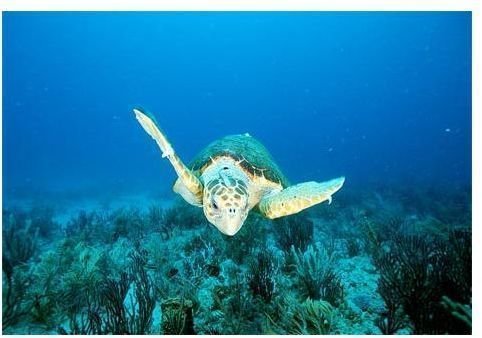Loggerhead Sea Turtle Adaptations
Adaptations of the Loggerhead Sea Turtle
Loggerhead sea turtles are the most plentiful of their kind to exist in U.S. Ocean areas. It was given the first binomial name by Carolus Linnaeus They get their common name from their enormous heads.
The adaptations of a loggerhead sea turtle (Caretta caretta), vary from their swimming behavior, anatomical features, and brief terrestrial experience. The loggerhead turtle share many of the same adaptations as other sea turtles as well.
When it comes to swimming or diving in the deep ocean their forelimbs are modified into a paddle-like flipper for swimming. They also have non retractable heads and limbs which allows for freedom of movement when swimming as well. Sea turtles are also great divers. Since these sea turtles have such are cold-blooded and have a low metabolism, they can stay submerged for long periods of time. While in long sea dives into the deep blue, oxygen is diverted away from organs requiring less oxygen and more towards the brain, heart, and central nervous system.
As far as its respiratory system is concerned, they use a method of anaerobic respiration, meaning this is a method of respiration involving energy in the form of ATP (Adenosine Triphosphate) in lieu of oxygen. Basically, it is respiration without the oxygen. Which means they rarely come up for air, but only when circumstances call for it. The lung capacity exchange when a breath is taken is around 50%.
Loggerhead sea turtles also do not require water in the normal fashion their terrestrial cousins do; instead, they metabolize seawater and get their fresh water that way. They also get their water source from the food they consume.
They secrete salt from the eye ducts just like most sea reptiles and birds do. So when a turtle comes ashore, it gives an appearance of crying, when really it is just the way they flush out sand and other debris from their eyes. This is especially helpful when the females go to dig nests, because when you are putting your face in the dirt, what better way to get that dirt out of your eyes than by crying it out.
That being said, loggerhead sea turtles do not have much when it comes to adaptation on land, because the only reason they come on land is to lay eggs, so they’re just left scooting across the beach getting to their destination. This leaves them open to interference from predators, and the hatchlings even more so; their terrestrial predators are raccoons, ghost crabs, foxes, sea gulls, dogs, and other animals that come across eggs and hatching turtles. Even though these predators have been known to wipe out nests, humans still reign as their main overall threat. Environmental organizations are doing their best to keep these nests protected during loggerhead turtle nesting season.
Sources
https://www.seaworld.org/animal-info/info-books/sea-turtle/adaptations.htm
